Cozydoor understands that as a project manager or director, your focus is on delivering exceptional results within budget and on time. We’re here to empower you with the knowledge and resources to make the most of milling aluminum, opening up a world of possibilities for your next project.
Understanding Aluminum and its Machinability
Aluminum, a lightweight yet remarkably strong metal, has become a cornerstone in modern construction. Its ability to be easily milled into complex shapes, combined with its exceptional resistance to corrosion, makes it an ideal material for a wide range of applications.
Common Aluminum Alloys Used in Machining
The world of aluminum alloys is vast, each offering unique characteristics for specific needs. Here’s a breakdown of some popular alloys used in milling:
- 6061 Aluminum: This versatile alloy, renowned for its strength and weldability, is often used for structural components, frames, and enclosures. Its excellent machinability makes it perfect for complex shapes and intricate details.
- 7075 Aluminum: Known for its exceptional strength-to-weight ratio, 7075 aluminum excels in demanding applications like aerospace, marine, and high-performance automotive. Its high tensile strength and resistance to fatigue make it ideal for structural elements requiring durability and resilience.
- 2024 Aluminum: This alloy balances strength with excellent workability, making it a favorite for aircraft parts, automotive components, and high-stress structures. Its high strength and resistance to corrosion are key assets for demanding environments.
The Impact of Aluminum’s Properties on Milling
Aluminum’s inherent properties make it a highly machinable metal, influencing the milling process in significant ways:
- Ductility: Aluminum’s ability to deform without breaking allows for precise milling operations, facilitating complex shapes and intricate designs.
- Thermal Conductivity: Aluminum readily dissipates heat generated during milling, reducing the risk of tool wear and ensuring consistent surface finishes.
- Softness: Aluminum is relatively soft, making it easier to machine compared to harder metals like steel. This allows for faster cutting speeds and increased efficiency.
Choosing the Right Aluminum Alloy for Your Project
The key to successful aluminum milling lies in selecting the right alloy for your project’s unique requirements. Here’s a guide to help you choose wisely:
- Strength and Durability: If your project demands exceptional strength and resistance to wear, consider 7075 or 2024 aluminum. Their high tensile strength and resistance to fatigue ensure long-lasting performance in demanding applications.
- Versatility and Machinability: For projects requiring intricate details, complex shapes, or ease of welding, 6061 aluminum is a reliable choice. Its excellent machinability and weldability make it ideal for a wide range of designs.
- Cost-Effectiveness: When budget is a primary concern, 6061 aluminum often offers the best balance between performance and cost.
When choosing an aluminum alloy, consider factors like environmental exposure, load-bearing requirements, and desired aesthetic appeal.
Choosing the Right Milling Aluminum Tools and Equipment
The tools and equipment you choose play a critical role in the quality, efficiency, and overall success of your aluminum milling projects.
Different Types of Milling Cutters for Aluminum
Milling cutters come in various styles, each designed to tackle specific tasks:
- End Mills: These versatile cutters, available in ball, flat, and square shapes, are commonly used for creating slots, pockets, and intricate profiles. Their precise cutting edges ensure clean and accurate results.
- Face Mills: Designed for generating flat surfaces, face mills are particularly effective for milling large areas, achieving consistent finishes and high material removal rates.
Selecting the Right Cutting Tool Material
The material of your cutting tool directly influences its performance and lifespan:
- Carbide: Renowned for its hardness and wear resistance, carbide is ideal for high-speed milling of aluminum, allowing for aggressive cutting and longer tool life.
- High-Speed Steel (HSS): HSS is a more cost-effective option for general purpose milling, offering good performance for less demanding applications.
Importance of Workholding and Tool Holding
Proper workholding and tool holding are essential for safe, efficient, and accurate milling operations:
- Workholding: Securely clamping the aluminum workpiece is critical to prevent movement during cutting, ensuring accuracy and preventing potential injuries.
- Tool Holding: Using the right tool holders ensures proper alignment and stability, allowing for consistent cutting and reducing tool vibration.
Introduction to CNC Milling Machines
CNC milling machines bring automation and precision to the milling process, enabling complex shapes and high-volume production.
- Computer Numerical Control (CNC): The heart of CNC milling machines is the CNC controller, which translates digital designs into precise machine movements.
- Automated Machining: CNC machines automate the milling process, ensuring consistent accuracy and reducing reliance on human operators.
- High-Precision Cutting: CNC milling machines offer exceptional precision and accuracy, allowing for intricate details and complex geometries.
Milling vs. Turning: Understanding the Differences
While both milling and turning are essential machining processes, they differ in their fundamental principles:
- Milling: Milling involves using a rotating cutter to remove material from a workpiece, creating various shapes and profiles.
- Turning: Turning uses a rotating workpiece against a stationary tool to create cylindrical or conical shapes.
Understanding the differences between these processes allows you to choose the most suitable method for your specific project.
Read more Blog & New:
Mastering Cutting Parameters for Aluminum
Precisely setting cutting parameters is crucial for optimal milling results, ensuring quality, efficiency, and minimizing tool wear.
Defining Cutting Speed, Feed Rate, and Cutting Depth
- Cutting Speed: Measured in feet per minute (FPM), cutting speed determines the velocity of the cutting tool’s rotation, impacting the amount of material removed per unit time.
- Feed Rate: Measured in inches per minute (IPM), feed rate represents the speed at which the cutter is fed into the workpiece.
- Cutting Depth: The depth of material removed with each pass of the cutter is called the cutting depth.
Calculating Optimal Cutting Parameters
Calculating the right cutting parameters requires considering factors like:
- Aluminum Alloy: The hardness and machinability of the aluminum alloy significantly influence cutting parameters.
- Cutting Tool: The type and material of the cutting tool also affect the optimal parameters.
- Desired Surface Finish: The desired surface quality influences the choice of cutting speed, feed rate, and cutting depth.
Remember: Experimentation and experience are key to fine-tuning cutting parameters to achieve the best results for your specific project.
The Relationship Between Cutting Parameters and Surface Quality
Cutting parameters directly impact the surface finish of the milled aluminum:
- Cutting Speed: Higher cutting speeds tend to produce rougher surfaces.
- Feed Rate: A lower feed rate generally results in a smoother surface finish.
- Cutting Depth: Larger cutting depths can lead to increased surface roughness.
Consequences of Incorrect Cutting Parameters
Incorrectly setting cutting parameters can lead to:
- Tool Breakage: Excessive cutting speeds or depths can cause tool breakage, leading to production delays and increased costs.
- Poor Surface Finish: Improper parameters can result in a rough or inconsistent surface, compromising the aesthetic appeal and functionality of the milled component.
- Dimensional Inaccuracies: Incorrect cutting parameters can cause dimensional deviations, affecting the fit and function of the milled part.
Optimizing Chip Evacuation and Machining Fluids
Efficient chip evacuation and proper lubrication are essential for successful aluminum milling, maximizing tool life, minimizing heat buildup, and achieving a high-quality surface finish.
Strategies for Effective Chip Evacuation
Chip evacuation involves effectively removing chips generated during milling:
- Through-Tool Coolant: This method delivers coolant directly to the cutting edge, reducing heat and facilitating chip removal.
- Air Blasts: Air jets can blow chips away from the cutting zone, preventing clogging and enhancing chip evacuation.
- Chip Brushes: Brushes can be strategically placed to sweep chips away from the cutting area, maintaining a clear path for chip removal.
Selecting the Right Machining Fluid for Aluminum
Machining fluids play a crucial role in lubricating the cutting process and controlling heat:
- Water-Based Fluids: These fluids are environmentally friendly and offer good cooling properties.
- Oil-Based Fluids: Oil-based fluids provide excellent lubrication, reducing friction and minimizing tool wear.
The Importance of Chip Control in Milling
Proper chip control during milling is vital for achieving optimal results:
- Chip Recutting: When chips are not removed effectively, they can become trapped in the cutting zone, causing tool wear and poor surface finish.
- Tool Breakage: Accumulated chips can clog the cutting area, creating excessive heat and potentially leading to tool breakage.
- Reduced Efficiency: Unevacuated chips can obstruct tool movement, reducing the efficiency of the milling operation.
The Role of Machining Fluids in Heat Dissipation and Lubrication
Machining fluids have a vital role in controlling heat buildup and reducing friction during the milling process:
- Heat Dissipation: Coolants transfer heat away from the cutting zone, preventing tool wear and maintaining consistent workpiece temperatures.
- Lubrication: Machining fluids reduce friction between the tool and the workpiece, minimizing tool wear and improving surface finish.




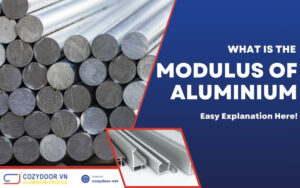
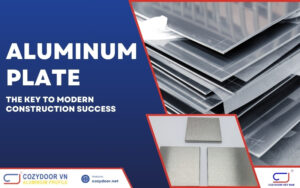
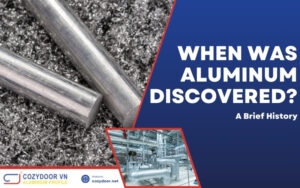
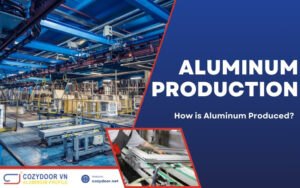
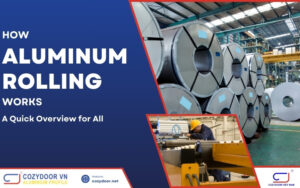

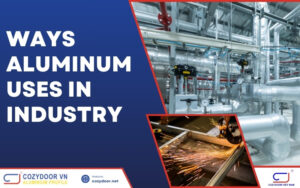
Raw Ingot Aluminum Cannery: A Comprehensive Guide
Cozydoor, your trusted partner in construction, understands the complexities of [...]
Nov
A380 Aluminum Properties: 5 Ways to Slash Costs & Boost Project Timelines
Cozydoor recognizes the demands of your industry and is committed [...]
Nov
Aluminum Beverage Cans: A Surprisingly Powerful Resource
Tired of costly materials and construction delays? Imagine harnessing the [...]
Nov
The Power of Aluminum Extrusion Profiles in Construction
Tired of the same old construction materials? Want to elevate [...]
Nov
The Ultimate Guide to Stainless Steel Recycling
Why Stainless Steel Recycling Matters in Today’s Construction Industry As [...]
Nov
Discover the Different Types of Aluminum and Their Uses
The right aluminum can elevate your construction to new heights, [...]
Nov
Understanding 6061 T6 Aluminum: Key Features Explained
Are you a construction project manager seeking a robust, versatile, [...]
Nov
Aluminum Plate: The Key to Modern Construction Success
Cozydoor, a leading provider of high-quality aluminum plate materials, understands [...]
Nov